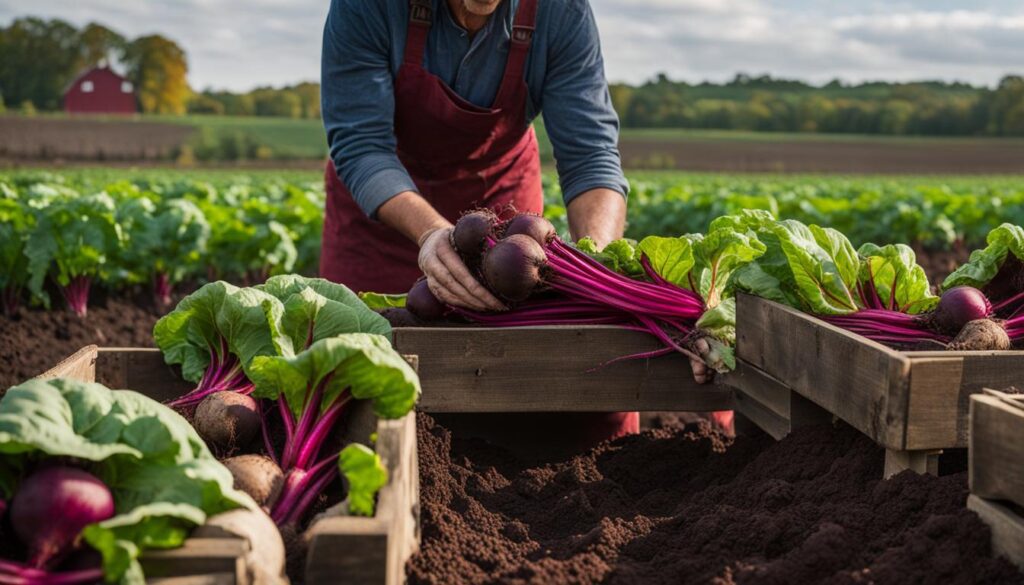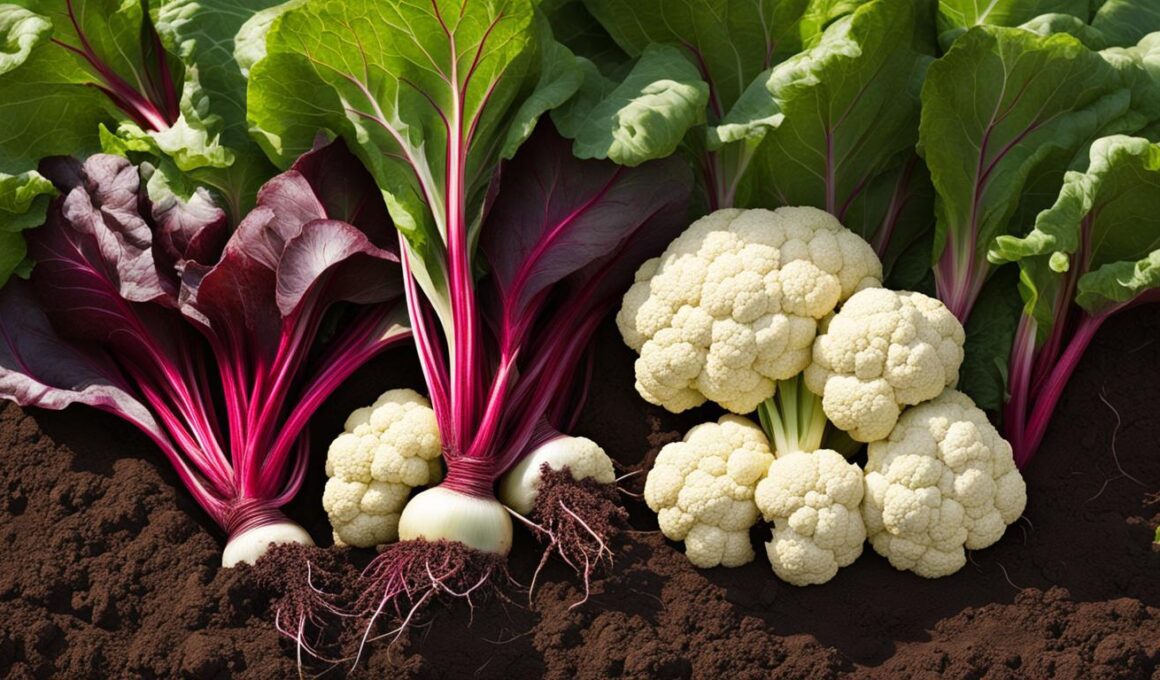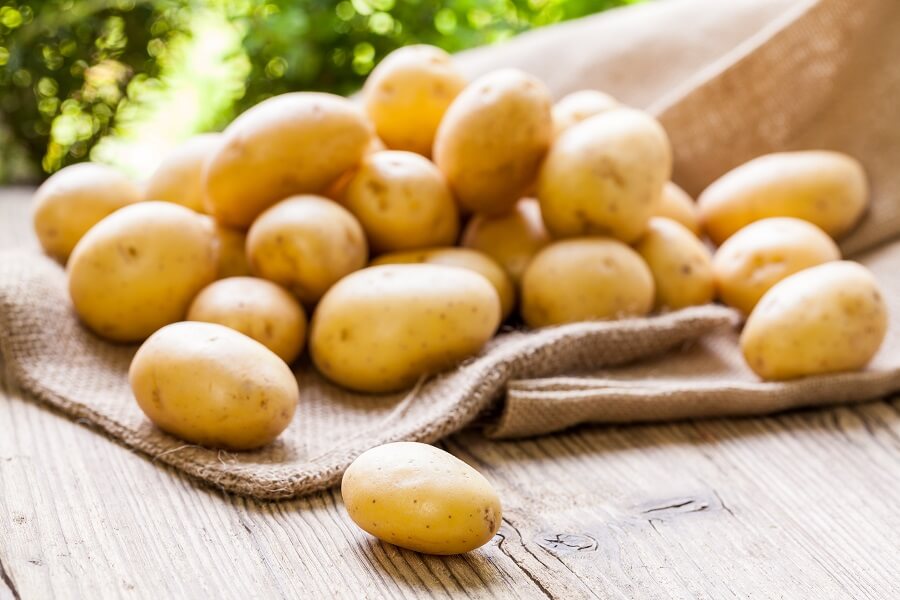Welcome to our gardening tips article on companion planting! In this guide, we will show you how to successfully grow beets and cauliflower together, utilizing the benefits of companion planting. By combining these two cool weather crops, you can maximize your garden’s productivity and create a harmonious growing environment. Let’s dive in!
Post Summary:- Companion planting involves planting different plants together for a more productive garden.
- Beets and cauliflower are ideal companions due to their similar growing requirements.
- Companion planting can help with pest control and pollination.
- Beets and cauliflower require well-drained soil and regular watering.
- Harvest and store beets and cauliflower properly to enjoy their flavors throughout the year.
Why Companion Plant Beets and Cauliflower?
Companion planting offers numerous benefits when it comes to growing beets and cauliflower together. One of the main advantages is natural pest control. Certain plants, like marigolds, release chemicals that repel pests, while others, such as nasturtiums, attract beneficial predators that feed on garden pests. By strategically planting these companion plants alongside beets and cauliflower, you can help protect your crops from destructive insects and minimize the need for chemical pesticides.
Another advantage of companion planting is improved pollination. Certain vegetables, like squash, rely on bees for effective pollination and fruit production. By including flowering plants that attract bees and other pollinators in your garden, you can increase the chances of successful pollination and ensure a better harvest of both beets and cauliflower.
Additionally, companion planting can help maximize your garden space. By combining different plants with similar growing requirements, you can make the most of limited space and increase overall productivity. For example, beets and cauliflower can be planted together, utilizing vertical growth and maximizing available planting areas. This efficient use of space allows you to grow a greater variety of crops in your garden.
Overall, companion planting beets and cauliflower provides benefits such as natural pest control, improved pollination, and maximized garden space. By practicing this gardening technique, you can create a thriving and harmonious garden that will reward you with bountiful harvests.

Companion Plants for Beets and Cauliflower
| Companion Plants | Benefits |
|---|---|
| Marigolds | Repel pests such as aphids and nematodes |
| Nasturtiums | Attract beneficial insects like ladybugs and lacewings |
| Celery | Enhance flavor and deter pests |
| Lettuce | Provide shade and retain soil moisture |
| Onions | Repel pests and deter fungal diseases |
How to Grow Beets and Cauliflower Together
To successfully grow beets and cauliflower together, it is important to understand their specific planting requirements. Both crops thrive in cool weather, making them suitable companions in the garden. Here are some key factors to consider when cultivating these vegetables side by side:
Planting Requirements:
Beets and cauliflower have similar soil preferences, requiring well-drained soil that is rich in organic matter. Ensure the soil is loose and friable, allowing for optimal root development. A pH level between 6.0 and 7.0 is ideal for both crops.
Soil Type:
Beets and cauliflower are adaptable to a variety of soil types, including loamy, sandy, and clay soils. However, sandy loam soils with good drainage and high organic content are particularly beneficial for these vegetables. Avoid heavy clay soils that tend to become compacted and limit root growth.
Planting Methods:
Beets can be grown from seeds or transplants. If sowing seeds directly, plant them in furrows about ½ inch deep and 12 inches apart. Thin seedlings to a spacing of 3 to 4 inches once they have grown a few inches tall. For transplants, carefully place them in the furrows and gently firm the soil around the roots.
Cauliflower is best started from transplants as they can be more challenging to grow from seeds. Dig a hole that accommodates the roots of the transplant and place the base of the stem level with the soil surface. Firm the soil around the plant to provide stability.
Remember to provide regular watering to both crops, ensuring the soil remains evenly moist. Mulching can help retain moisture and suppress weed growth. As your beets and cauliflower grow, provide appropriate fertilization to support their healthy development.
| Planting Requirements | Soil Type | Planting Methods |
|---|---|---|
| Cool weather crops | Adaptable to various soil types | Grown from seeds or transplants |
| Well-drained soil rich in organic matter | Prefer sandy loam soils | Sow beets in furrows, thin seedlings |
| Optimal pH level of 6.0-7.0 | Avoid heavy clay soils | Transplant cauliflower carefully |
| Regular watering and mulching | Provide appropriate fertilization |
Harvesting and Storing Beets and Cauliflower
Proper harvesting and storage techniques are essential to ensure that you can enjoy the flavors of your beets and cauliflower long after they’ve been harvested. The timing of the harvest depends on the specific vegetable, and it’s important to pay attention to the size and visual cues to determine when they are ready.
Beets are typically ready for harvest when their roots reach about two inches in diameter. The greens can also be harvested throughout the growing season for use in salads or sautés. When harvesting beets, it is recommended to do so in the morning when the temperature is cool. This helps to preserve the freshness and flavor.
Cauliflower, on the other hand, is harvested when the heads are 6 to 8 inches in diameter and have a firm texture. To harvest cauliflower, cut the head off just below the base of the head. It is important to harvest cauliflower when the heads are compact, as they can quickly become overripe and develop a bitter taste if left on the plant too long.
Once harvested, proper storage is crucial to maintaining the quality of your beets and cauliflower. Both vegetables can be stored in the refrigerator for short-term use. To store beets, wrap them in a damp paper towel and place them in a plastic bag in the vegetable drawer. This helps to retain moisture and prevent them from drying out. Cauliflower, on the other hand, can be stored in the refrigerator in a plastic bag without the need for a damp paper towel.
For longer-term storage, both beets and cauliflower can be preserved through freezing. Beets can be frozen by blanching them in boiling water for a few minutes, then placing them in freezer bags. However, it is important to note that beets may become slightly soft or mushy when thawed. Cauliflower can also be frozen by blanching the heads in boiling water for three minutes, then transferring them to freezer bags. Freezing cauliflower helps to preserve its texture and flavor for future use.

Harvesting and Storing Guidelines
| Vegetable | Harvest Timing | Storage Method |
|---|---|---|
| Beets | When roots reach approximately two inches in diameter. Greens can also be harvested throughout the growing season. | Wrap in a damp paper towel and store in a plastic bag in the refrigerator. |
| Cauliflower | When heads are 6 to 8 inches in diameter and have a firm texture. | Store in a plastic bag in the refrigerator. |
| Long-term Storage | Freezing | Beets: Blanch in boiling water for a few minutes, then freeze in freezer bags. Cauliflower: Blanch heads in boiling water for three minutes, then transfer to freezer bags. |
Can Brussels Sprouts and Beets Be Grown Together with Cauliflower?
When planning your vegetable garden, you may wonder if you can grow brussels sprouts and cauliflower together. The good news is, both of these cool-season crops thrive in similar conditions and can be grown together in the same garden bed. This combination allows you to efficiently utilize space while enjoying a variety of delicious, homegrown produce.
Conclusion
Growing beets and cauliflower together offers a multitude of benefits that can help you create a productive garden. The successful companionship between these two plants not only maximizes the space in your garden but also enhances the overall health and productivity of both crops.
By planting beets and cauliflower together, you can take advantage of their shared characteristics and growing requirements. These cool weather crops, belonging to the cabbage family, thrive in similar conditions, making it easier for you to provide the necessary care and maintenance.
In addition to efficient space utilization, growing beets and cauliflower as companions also supports the principles of companion planting. Together, they can improve pest control, attract beneficial pollinators, and promote a more sustainable gardening approach. Not only will your garden look visually appealing, but it will also contribute positively to the environment.
So, why not give companion planting of beets and cauliflower a try? It’s a win-win situation – you’ll be able to enjoy the benefits of growing two delicious and nutritious vegetables together while creating a beautiful and productive garden. Start now and witness the magic of successful companionship in your own backyard!
FAQ
What is companion planting?
Companion planting is a method in organic gardening that involves planting two or more different plants together to make the garden more productive.
Why are beets and cauliflower ideal companion plants?
Beets and cauliflower are both cool weather crops and belong to the cabbage family, which means they have similar growing requirements.
What are the benefits of companion planting for beets and cauliflower?
Companion planting can help control pests, promote pollination, and maximize garden space.
How should I plant beets and cauliflower together?
Beets can be grown from seeds or transplants and should be sown in furrows about ½ inch deep and 12 inches apart. Cauliflower is best started from transplants and should be placed in a hole that accommodates its roots, with the base of the stem level with the soil surface.
When are beets and cauliflower ready for harvest?
Beets are ready for harvest when their roots reach about two inches in diameter, while cauliflower is harvested when the heads are 6 to 8 inches in diameter.
How should I store beets and cauliflower?
Wrap beets and cauliflower in a damp paper towel and place them in a plastic bag in the refrigerator. Beets can also be frozen, while cauliflower can be blanched and frozen for long-term storage.









